Phosphorus Time Bomb for Agriculture? Myth and Reality
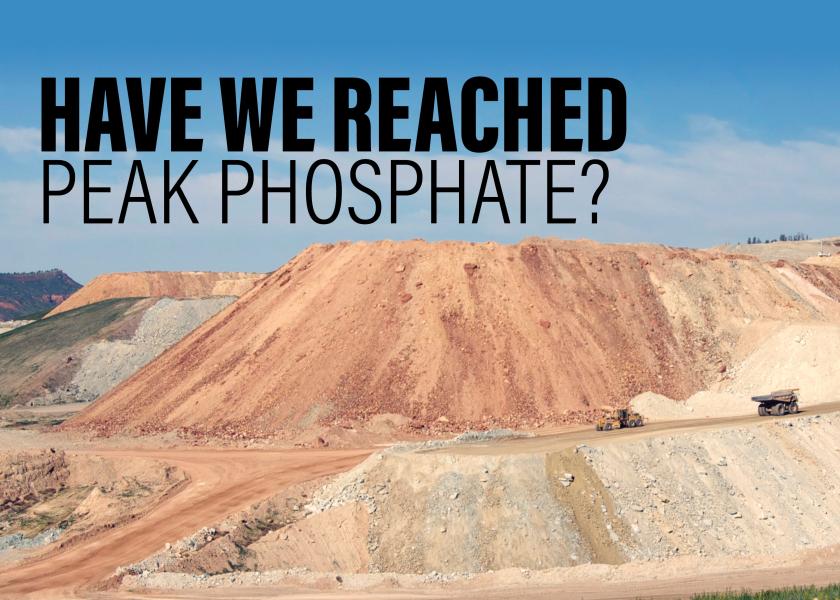
When Hennig Brand lugged a final, sloshing pail of yellow urine over the cobblestones of a Hamburg street and down to a basement where he’d patiently collected 1,500 gallons of his neighbors’ pee in pots and tubs, the putrid stockpile represented one of the greatest leap forwards in agricultural history—albeit propelled by accident. Brand was a German alchemist and hoped to make physical gold from his neighbors’ figurative gold. For several weeks in 1669, Brand boiled away the fetid urine brew, leaving behind a pasty, glow-in-the-dark prize—phosphorus.
As the 11th most abundant mineral on the planet, phosphorus is a ubiquitous component of everything from DNA to teeth, but its agricultural fertilizer source, rock phosphate, is a limited resource. Translation: phosphorus forever, phosphate finite. Over the past two decades, warnings and predictions regarding Peak Phosphorus and a purported dwindling supply of phosphate have alarmed the agriculture industry, but the U.S. Geological Survey (USGS) and multiple scientific organizations insist concerns over the rock phosphate supply are distorted. However, the din over phosphate abundance is likely to increase in volume with related questions over price, quality, regulation and conservation. Three-hundred and fifty years after Brand stared in wonder at white residue distilled from neighborhood discharge, phosphorus remains surrounded by questions.
No Substitutes
In 2019, 23 million tons of phosphate ore ($1.6 billion value) was mined by five companies at 10 mines across four states in the U.S.: Florida and North Carolina extracted 75% of total domestic output; Idaho and Utah accounted for the rest. According to USGS, over 95% of total U.S. mined phosphate was used “in the manufacture of granular and liquid ammonium phosphate fertilizers and animal feed supplements.” (The remainder of mined phosphate rock was used in industrial application, mainly in the production of glyphosate.)
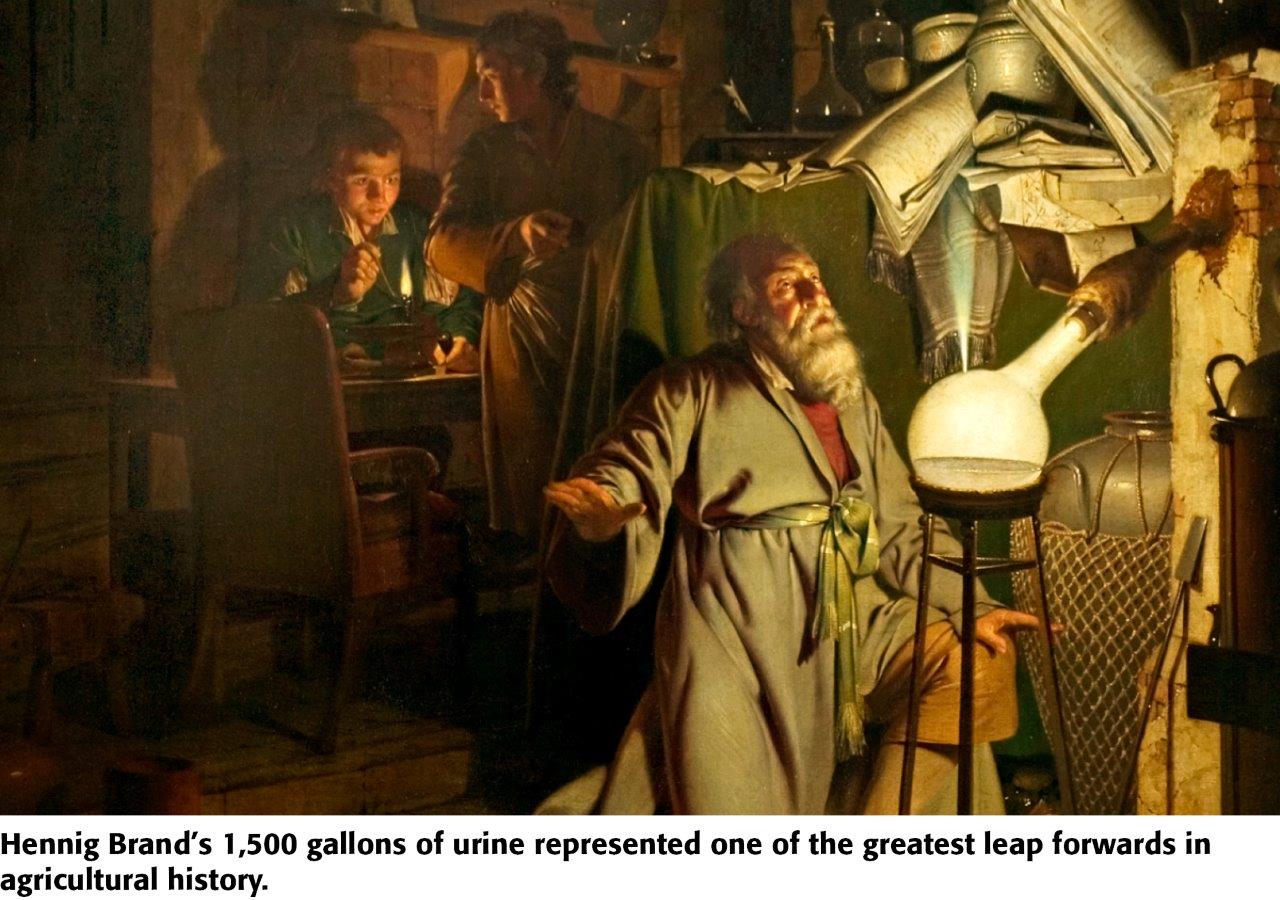
Whether a question of Peak Oil or Peak Phosphorus, “Peak” debates revolve around a simplified, general premise: After half the supply of a given resource is gone, the remainder produces an economic melee. The advent of fracking booted Peak Oil proponents off center stage, and Peak Phosphorus advocates (most visibly financier Jeremy Grantham) have been countered by the International Fertilizer Development Center’s (IFDC) report and estimate of plentiful rock phosphate reserves capable of producing fertilizer for the next several hundred years.
Stephen Jasinski, USGS mineral commodity specialist, calls the reaction to Peak Phosphorus, “exaggerated,” and says, “There are no imminent shortages of phosphate rock. Media coverage seems to have slowed down over the past several years.”

Jasinski also describes global supply: “World consumption of marketable phosphate rock was about 240 million metric tons in 2019. U.S. consumption of phosphate rock in 2019 was about 25 million metric tons. World reserves are about 69 billion metric tons. World resources are about 300 billion tons.”
Further, a USGS Mineral Commodity Summary (January 2020) prepared by Jasinski is blunt: “There are no imminent shortages of phosphate rock.” Significantly, the Summary’s concluding text is equally blunt: “There are no substitutes for phosphorus in agriculture.”
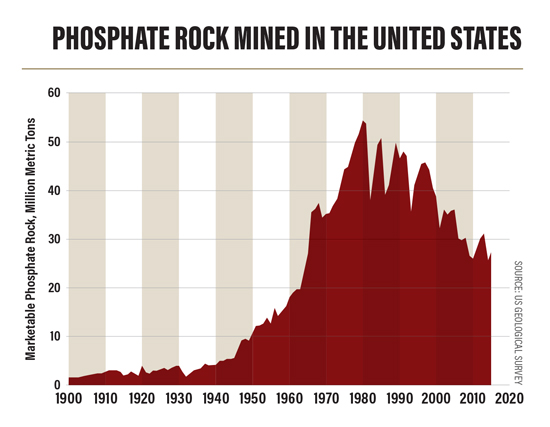
Buffalo Bones
Plants cannot live by nitrogen alone. Phosphorus is the backbone of the biological membranes holding plant cells together, and its absence is often the culprit of hidden hunger in crops. The yellowing foliage of nitrogen deficiency is telltale and easily noted by a farmer, but phosphorus deficiency, evidenced by slow growth, is nuanced and initially far more difficult to detect.
Spanning a career with North Dakota State University, Jay Goos has taught soil fertility and fertilizer technology for 40 years. While taking no position on Peak Phosphorus, he says the debate is healthy and highlights key issues agriculture will face over the next 40 to 50 years.
Quantity, whether high or low, will be mitigated by quality, Goos contends. The best quality of any product is mined first because it is the most profitable, he says: “As world supplies of rock phosphate continue to be mined, it is inevitable that lower-quality ores will be mined, possibly containing heavy metals, or metals like iron, which make the ore more difficult to process. This will affect the price of high-quality fertilizer. Phosphorus environmental regulations, which we already see in some states where heavy rates of animal manures have overloaded the soil with phosphorus, are going to also be an issue for farmers. Phosphorus is going to be a big, important topic for agriculture, and that’s why we have to recycle phosphorus as effectively as possible.”
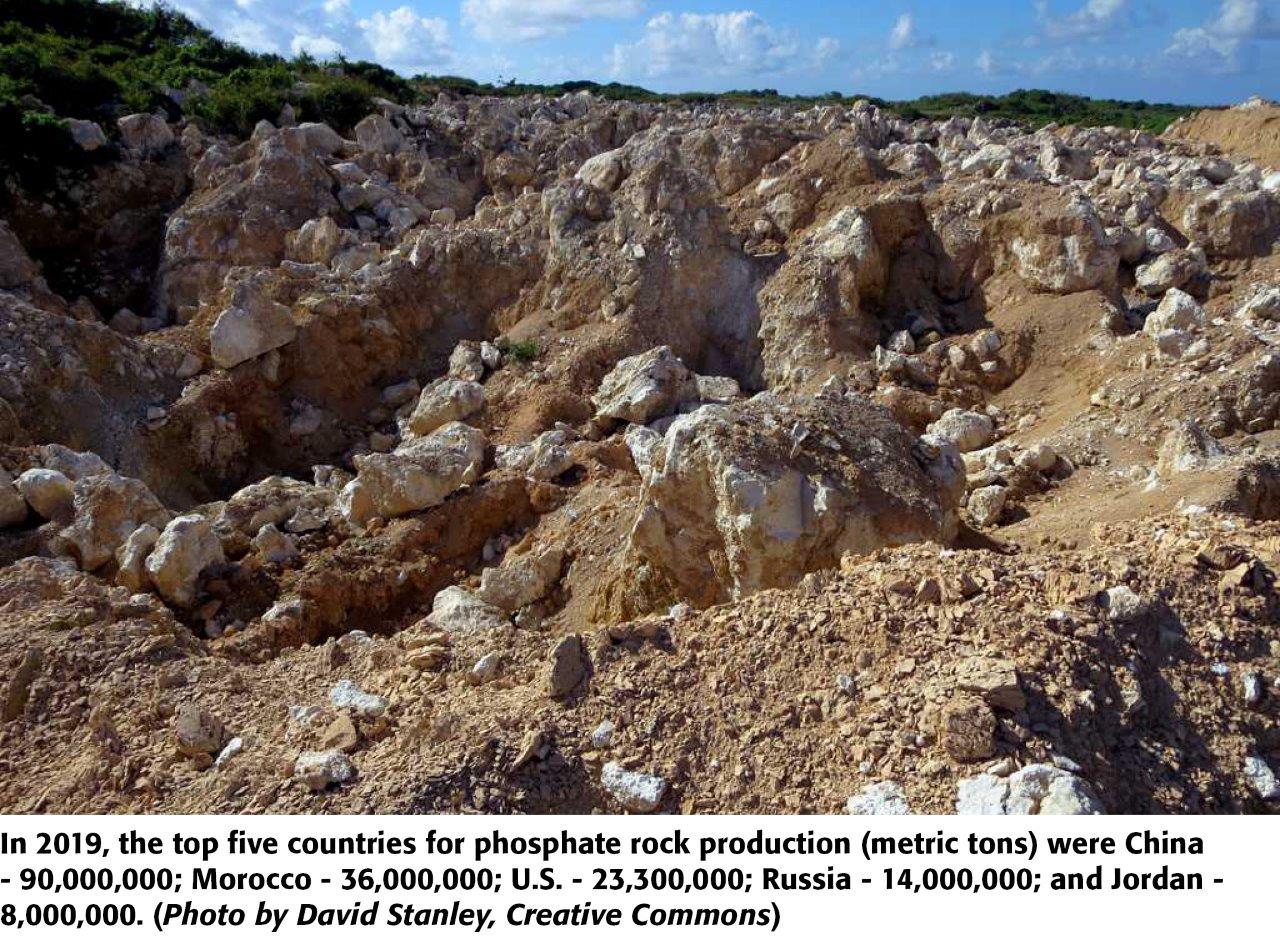
“Phosphorus unfortunately moves in straight lines, where it should be a circle,” Goos continues. “For example, rock phosphate mined in Florida is made into fertilizer, which then goes to Iowa to grow corn or soybeans. The corn and soy then go to pig farms in North Carolina where the manure is spread onto fields already overloaded with phosphorus. The recycling is not happening, and a more rational approach would be smaller animal units where the phosphorus could fertilize surrounding fields, that actually need the phosphorus. We’ve got to stop dumping phosphorus on fields where it is already abundant.”
Goos’ North Dakota stomping ground is a relative phosphorus desert, with low levels of the key nutrient when compared with other regions of the U.S.: “Our average soil test in North Dakota shows phosphorus at 8 ppm, and that’s not very high compared to a value of 100-plus in regions that receive high rates of animal manure.”
North Dakota, like many Great Plains states, houses a surreal, but revealing, story of phosphate loss. Buffalo bones once lay scattered by the millions across the Great Plains, echoes of astoundingly expansive bison herds. The bones became fodder for multiple industries, and were used in sugar refinement, dry lubrication, bone China, and fertilizer production. (Bone contains roughly 15% phosphate.)
During the height of the buffalo bone trade, 1880-1892, as settlers spread across North Dakota and often had no income source beyond meager crops, they grabbed a lifeline as bone collectors. Sold between $5-20 per ton, millions of tons of bones were gathered by the wagonloads across the Plains states and hauled to railheads, bound for the grind of East Coast factories.
In Kansas, state records detail the export of 3.2 million tons of buffalo bones. Although North Dakota lacks documentation of bone totals (records were destroyed by fire), Dave Franzen, an NDSU Extension soil scientist, estimates a similar export total for the Peace Garden State. Extrapolating, he makes a telltale projection on the amount of phosphate lost to export: If 3.2 million tons of bones, containing 15% phosphate, were shipped out of North Dakota, the loss would equal 480,000 lb. of phosphate. “I estimate the period when settlers were selling bones for cash removed about two years of today’s phosphate use from the state at today’s present rates of application.”
“Another point in the North Dakota phosphate situation is that the deep 2’-3’ of black topsoil present in 1880, and which was lost largely through wind erosion since the prairies were first plowed, contained the equivalent of over 200 years of phosphate application at today's typical fertilizer rates in the state,” Franzen adds. “We now farm phosphate-depleted soil.”

Approximately 50 years after the peak of buffalo bone consumption, President Franklin Roosevelt expressed growing phosphate concerns in a May 10, 1938, speech to Congress:
“As a result of the studies and tests of modern science it has come to be recognized that phosphorus is a necessary element in human, in animal and in plant nutrition. The phosphorus content of our land, following generations of cultivation, has greatly diminished. It needs replenishing. The necessity for wider use of phosphates and the conservation of our supplies of phosphates for future generations is, therefore, a matter of great public concern. We cannot place our agriculture upon a permanent basis unless we give it heed.”
“I cannot overemphasize the importance of phosphorus not only to agriculture and soil conservation but also to the physical health and economic security of the people of the Nation. Many of our soil types are deficient in phosphorus, thus causing low yields and poor quality of crops and pastures.”
The Guano Act
Where is the bulk of the world’s phosphate? Who sits on the supply? Morocco owns close to 70% of global phosphate reserves. In 2019, according to Jasinski, the top five countries for phosphate rock production (metric tons) were China - 90,000,000; Morocco - 36,000,000; U.S. - 23,300,000; Russia - 14,000,000; and Jordan - 8,000,000.
As with oil, or any natural resource, geography often plays a key role in security and price point. From 1864-1866, Spain and Peru fought the Chincha Islands War, sparked by possession of islands renowned for vast guano deposits (a major source of phosphorus and nitrogen) sometimes reaching a phenomenal depth of 180’. Roughly a decade prior, the U.S. passed The Guano Islands Act of 1856, allowing U.S. citizens to claim any island that contained guano and wasn’t already claimed by another country.
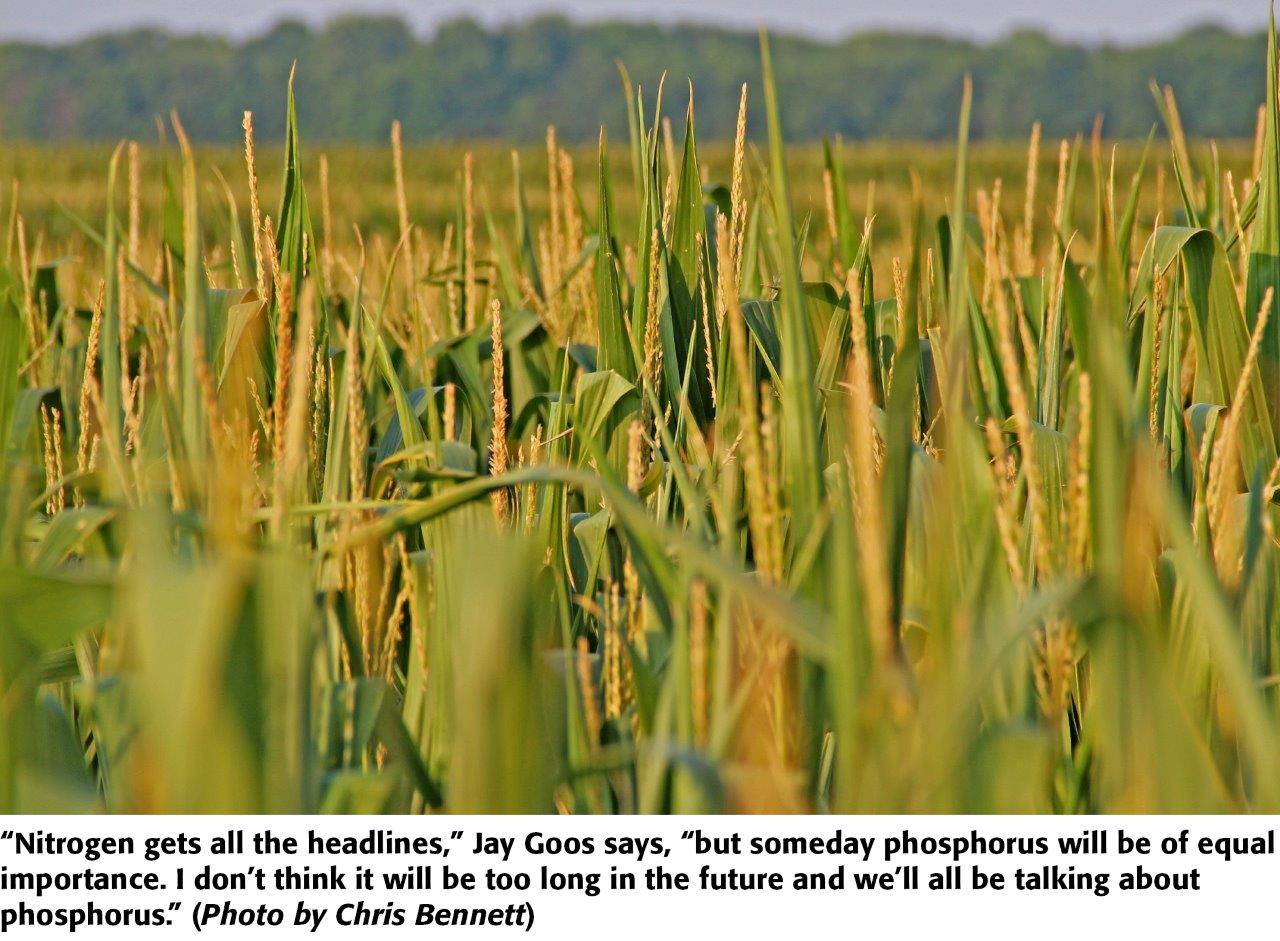
However, in contrast to the historical scramble, current phosphate supplies appear abundant, in contrast to Peak Phosphorus fears. In the highlights of its 2010 study, “World Phosphate Rock Reserves and Resources,” IFDC states: “The amount of remaining phosphate rock reserves and resources worldwide has been an issue of speculation over the last 20 years. It has been hypothesized that phosphate rock production will ‘peak’ in 2033-2034 with production unavoidably decreasing as the reserves are depleted. Dire consequences for world agricultural production and food security are linked to ‘peak phosphate.’ However, there is no indication that a ‘peak phosphorus’ event will occur in 20-25 years.”
IFDC continues: “Assuming current rates of production, IFDC estimates that there are sufficient phosphate rock concentrate reserves to produce fertilizer for the next 300-400 years.”
In a press release touting the study, IFDC emphasizes phosphate-related tasks ahead: “There is no substitute for phosphorus in agriculture, or indeed in life. Phosphate rock is a finite resource – at some point in time the earth’s supply may be exhausted. There should be a global effort to develop more effective phosphate rock mining and processing technologies and to utilize phosphate fertilizer, other phosphate-based products and phosphate-containing waste as efficiently as possible, while keeping unused nutrients out of watersheds and the oceans.”
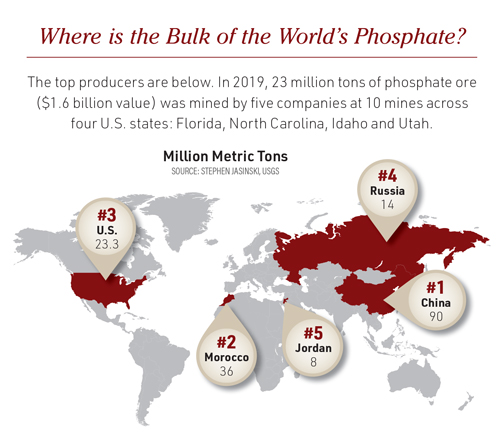
Someday Soon
Currently researching wheat variety phosphorus consumption, Goos has completed characterizations on 80 wheat varieties and turned the data over to USDA in hopes of obtaining keys of phosphorus efficiency. “Some varieties just require more phosphorus for proper growth. I want people to understand this because phosphorus efficiency might be a selection criterion 20 years from now. It’s an ongoing project and USDA will now determine if we can make predictions using genetic marker aspects of phosphorus efficiency.”

Goos contends agriculture must heighten awareness related to overall nutrient conservation. “Small measures count. Look at what a farmer can do right now, today. For example, if a guy has an air seeder and he’s planting wheat, he can put phosphorus pellets right with the seed and that’s much more effective than broadcasting and tilling it in.”
“Nitrogen gets all the headlines,” Goos concludes, “but someday phosphorus will be of equal importance. I don’t think it will be too long in the future and we’ll all be talking about phosphorus.”
For more, see:
Government Cameras Hidden on Private Property? Welcome to Open Fields
Descent Into Hell: Farmer Escapes Corn Tomb Death
A Skeptical Farmer's Monster Message on Profitability
Farmer Refuses to Roll, Rips Lid Off IRS Behavior
Rat Hunting with the Dogs of War, Farming's Greatest Show on Legs
Killing Hogzilla: Hunting a Monster Wild Pig
Shattered Taboo: Death of a Farm and Resurrection of a Farmer
Frozen Dinosaur: Farmer Finds Huge Alligator Snapping Turtle Under Ice
Breaking Bad: Chasing the Wildest Con Artist in Farming History
The Great Shame: Mississippi Delta 2019 Flood of Hell and High Water
In the Blood: Hunting Deer Antlers with a Legendary Shed Whisperer
Farmer Builds DIY Solution to Stop Grain Bin Deaths
Corn Maverick: Cracking the Mystery of 60-Inch Rows
Blood And Dirt: A Farmer's 30-Year Fight With The Feds







